This version of pozole rojo is from mi amiga who lives in the Bajío region of Mexico (west-central Mexico). It is a luscious slow-cooked stew made with pork, hominy, Mexican spices, and a blend of mild to moderate chile peppers in the rojo sauce. It is simple to make without a lot of hands-on time, but to develop the full flavors it should be simmered for a couple of hours.
This recipe makes a big batch as pozole is a classic dish to share with a crowd!

Jump to: RECIPE | What is Pozole? | Key Ingredients | Illustrated Step by Step | Rojo vs Verde vs Blanco | FAQs
This post may contain affiliate links, and you can read our disclosure information here–

What is Pozole (Posole)?
Pozole is one of Mexico’s oldest soups or stews, said to date back to Aztec times. There are now a ton of different versions but old-school pozole rojo has a smoky red stock spiced with pureed chile peppers, slow cooked with pork and hominy (whole white corn kernels that have been acidified to soften and plump up the kernels).
It is essentially an earthy, aromatic pork and hominy stew that is slow cooked in large batches. It’s simple, so the ingredients are quite important.
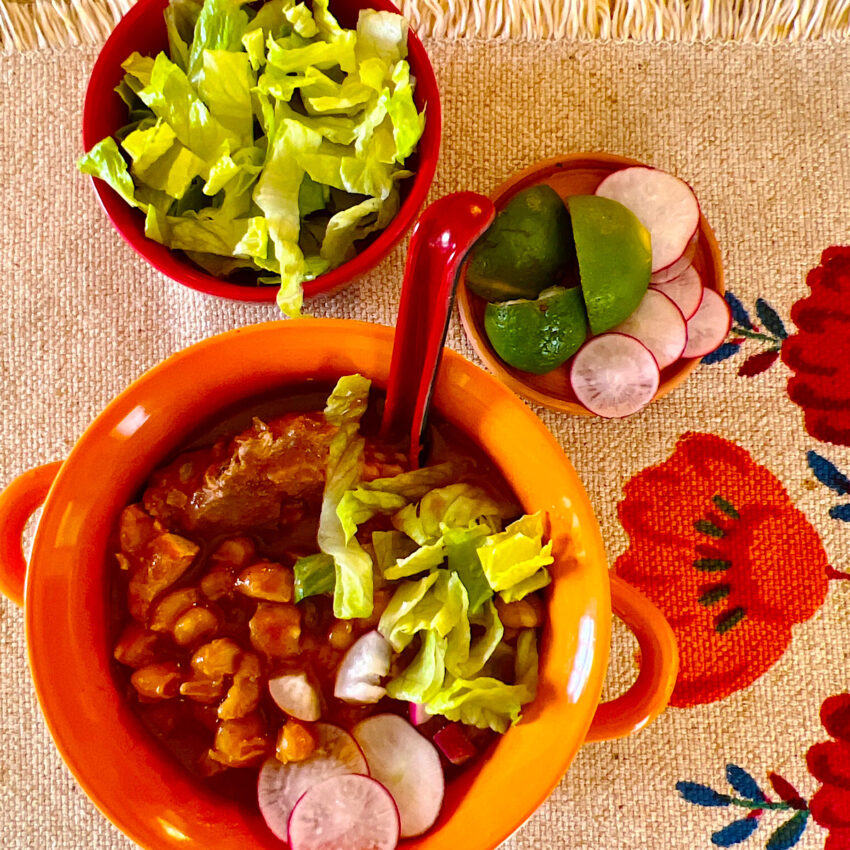
The role of hominy: Hominy provides a soft chewy texture that complements the rich broth.
The flavor of the broth: The broth is complex and should include pork with bones in addition to some pork with fat. For example the pork might include pigs’ feet, pork shanks and or pork shoulder.
I have made this recipe with using only pork shoulder, as it is readily available in US grocery stores. However, pigs feet and pork shanks are available in Mexican grocery stores, and adding pork with bones is the traditional way to make this stew. Both versions will give you a delicious pozole!

When is Pozole Served?
While in the U.S. we think of stews as cold weather fare, in Mexico pozole is served whenever you need to feed a crowd or when there is something special going on (i.e., a fiesta).
Pozole is often thought of as a rural celebration food, often seen at fiestas, but a more casual celebration dish than mole or tamales.
One friend from Mexico told me it was sometimes referred to as “drunken food”, as it was often enjoyed at fiestas that had plenty of drink and merriment.
Mi amiga also said that pozole is even considered the dish to celebrate the week’s end (which is Thursday).
Is Pozole Low Carb?
The hominy part of pozole is quite starchy and definitely not low carb.
If you want a slow carb version, try this pozole with garbanzo beans. It substitutes garbanzo beans for the hominy. This is my go-to version when I am being compliant with the slow carb diet.

Another slow carb pozole that is slow carb and truly easy is this version made in the slow cooker. It uses ancho powder instead of rehydrated chile peppers and substitutes navy beans for hominy.
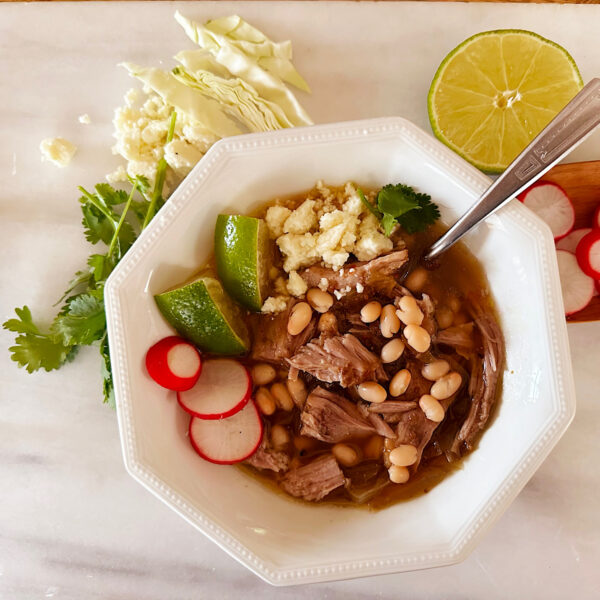
Key ingredients
While the broth and hominy are the base of the soup, it is the garnishes that really bring pozole to life. Typically the soup is served in bowls at the table and additional plates are heaped with garnishes. Some say pozole is “all about the garnishes”.
The following photo shows you all the ingredients you will need for this recipe. For details on measurements, see the recipe below.
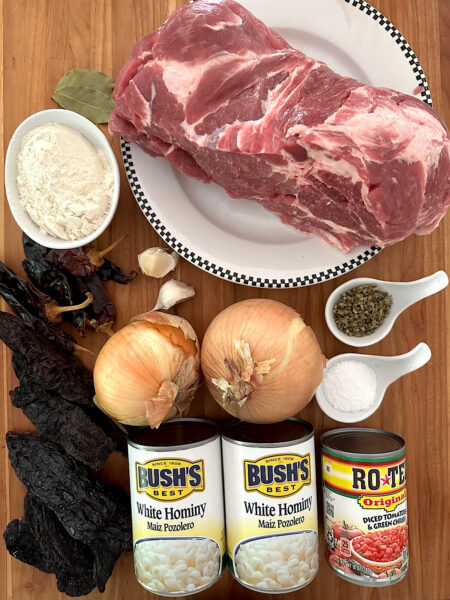
The garnishes vary but typical garnishes found on a Mexican table might include:
- Thinly sliced radishes
- Chopped avocados
- Cilantro
- Chopped onions (purple or yellow)
- Wedges of lime
- Shredded cabbage or lettuce
- A range of hot sauces
- Crisp tostados
- Pepitas
- Sour cream for those who want to tone down the heat level
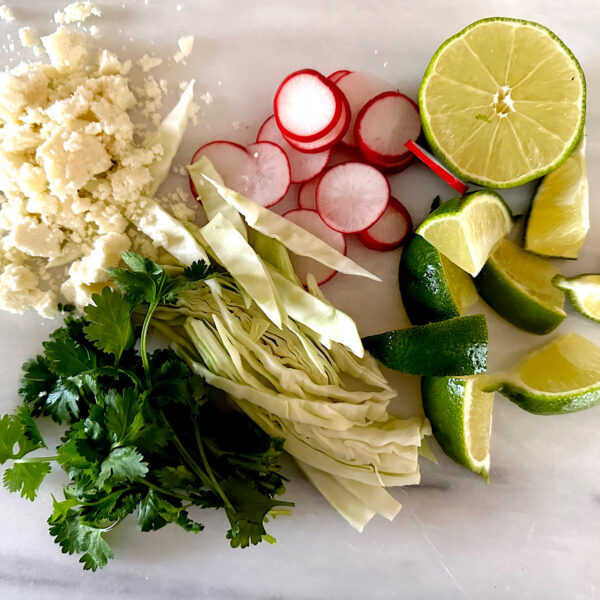
Illustrated Step by Step:
Here are the steps lined out with photos. For the details of the recipe itself, see the recipe card below.
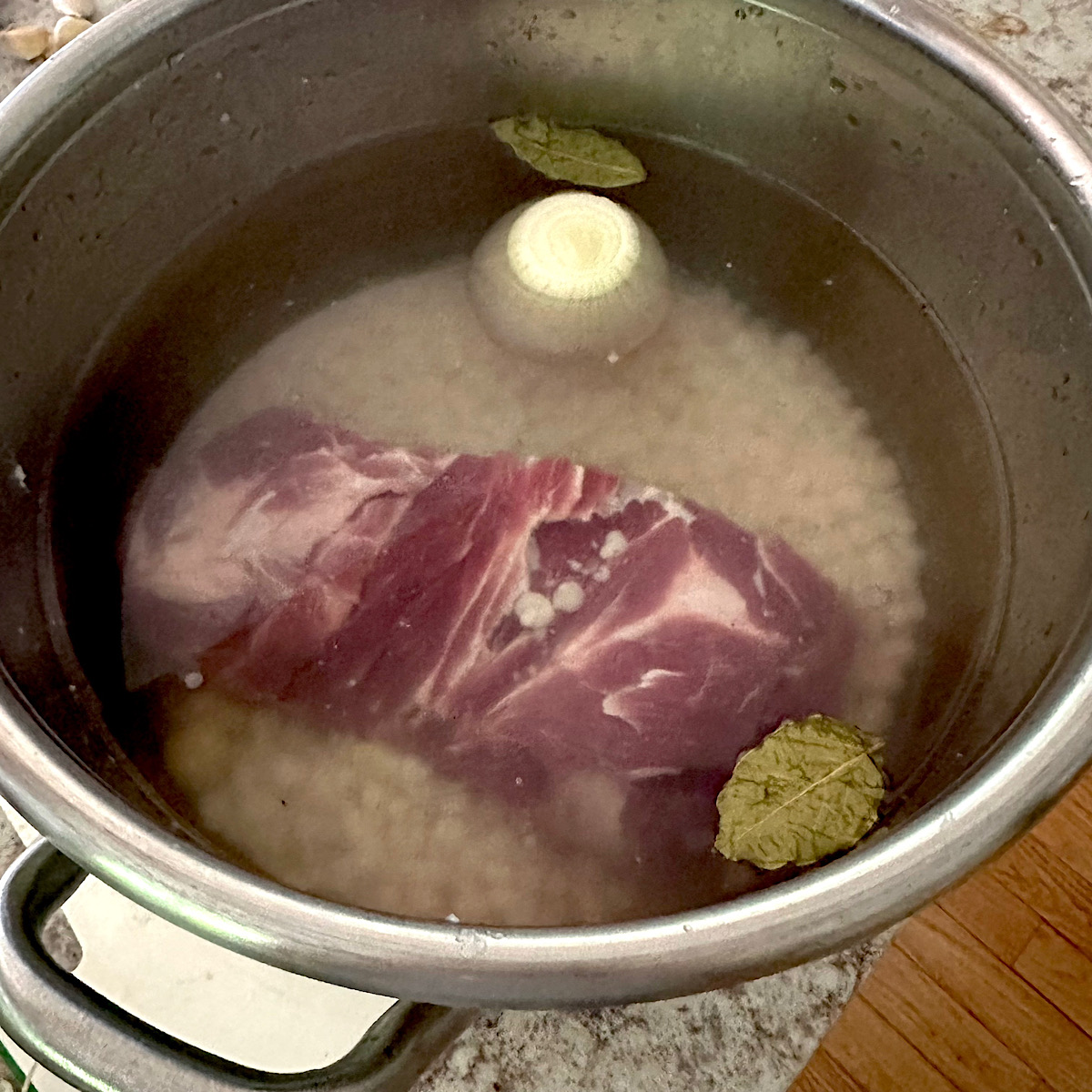
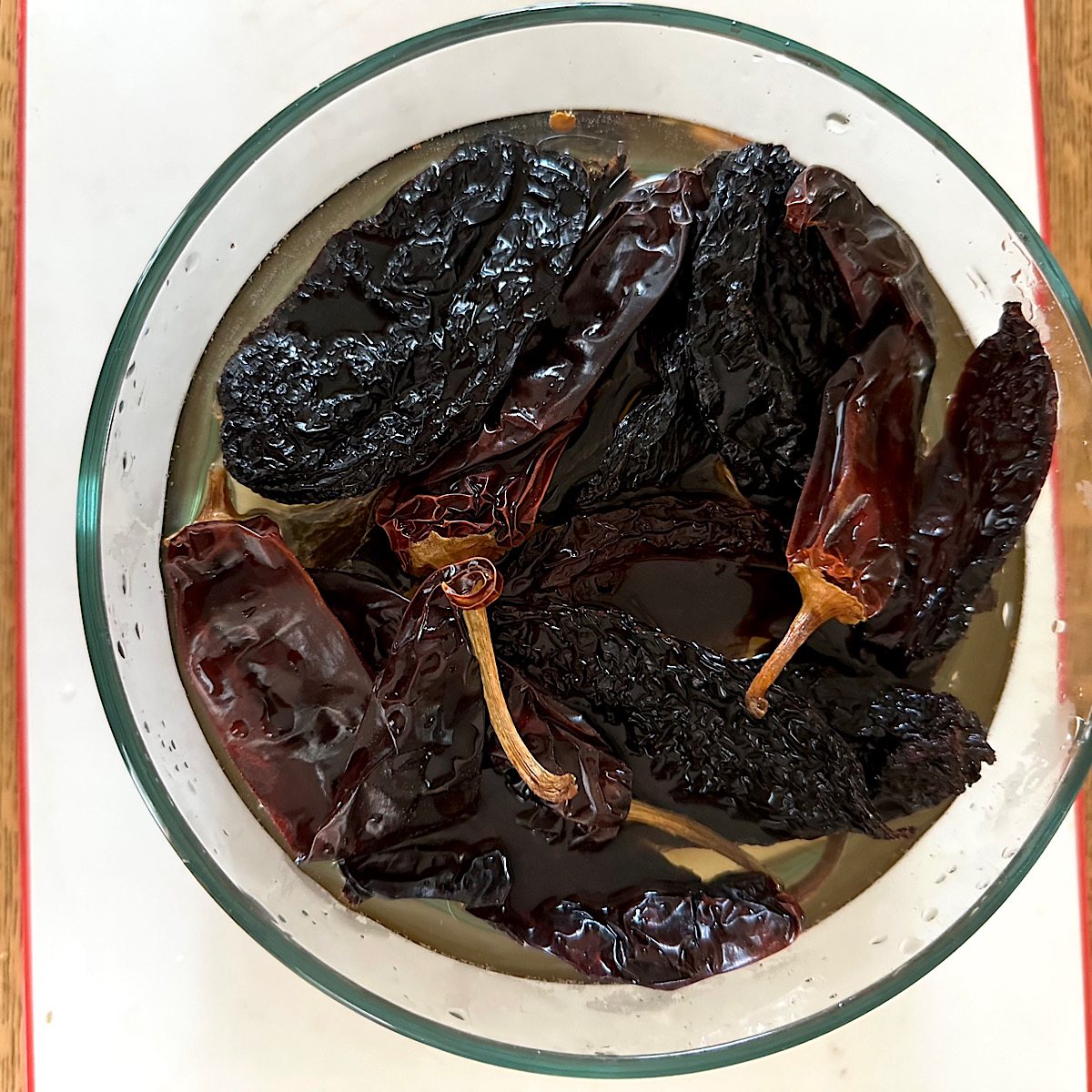

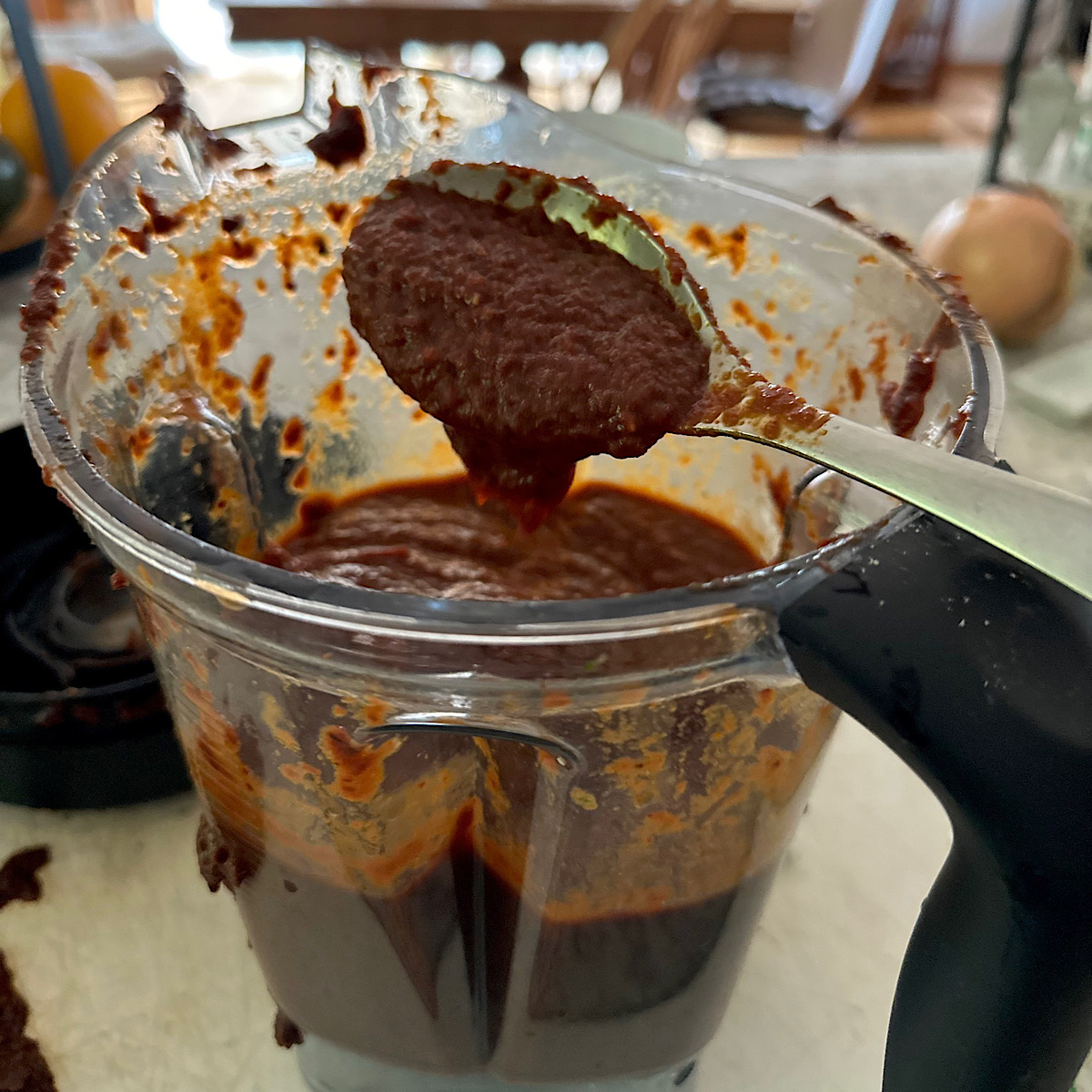
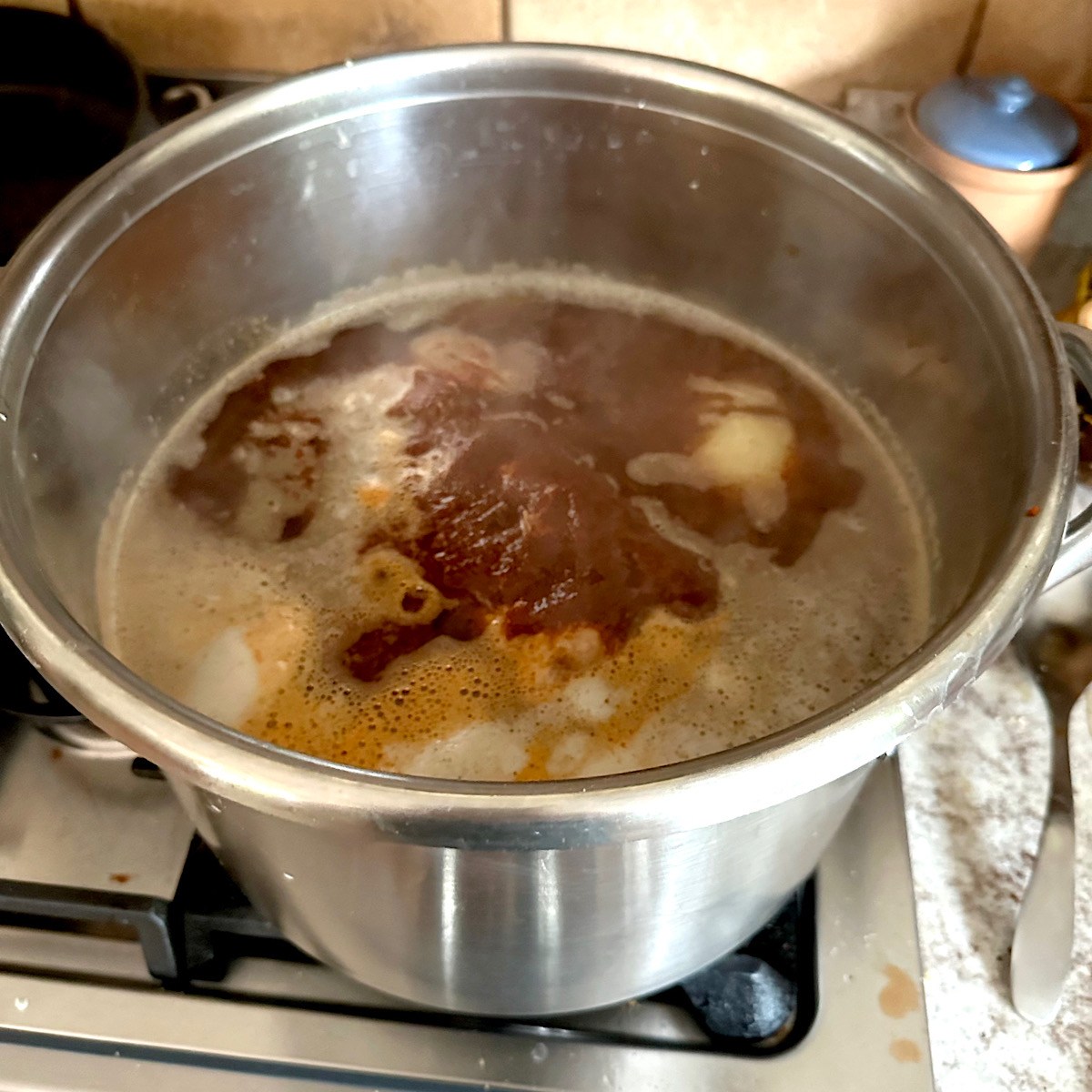
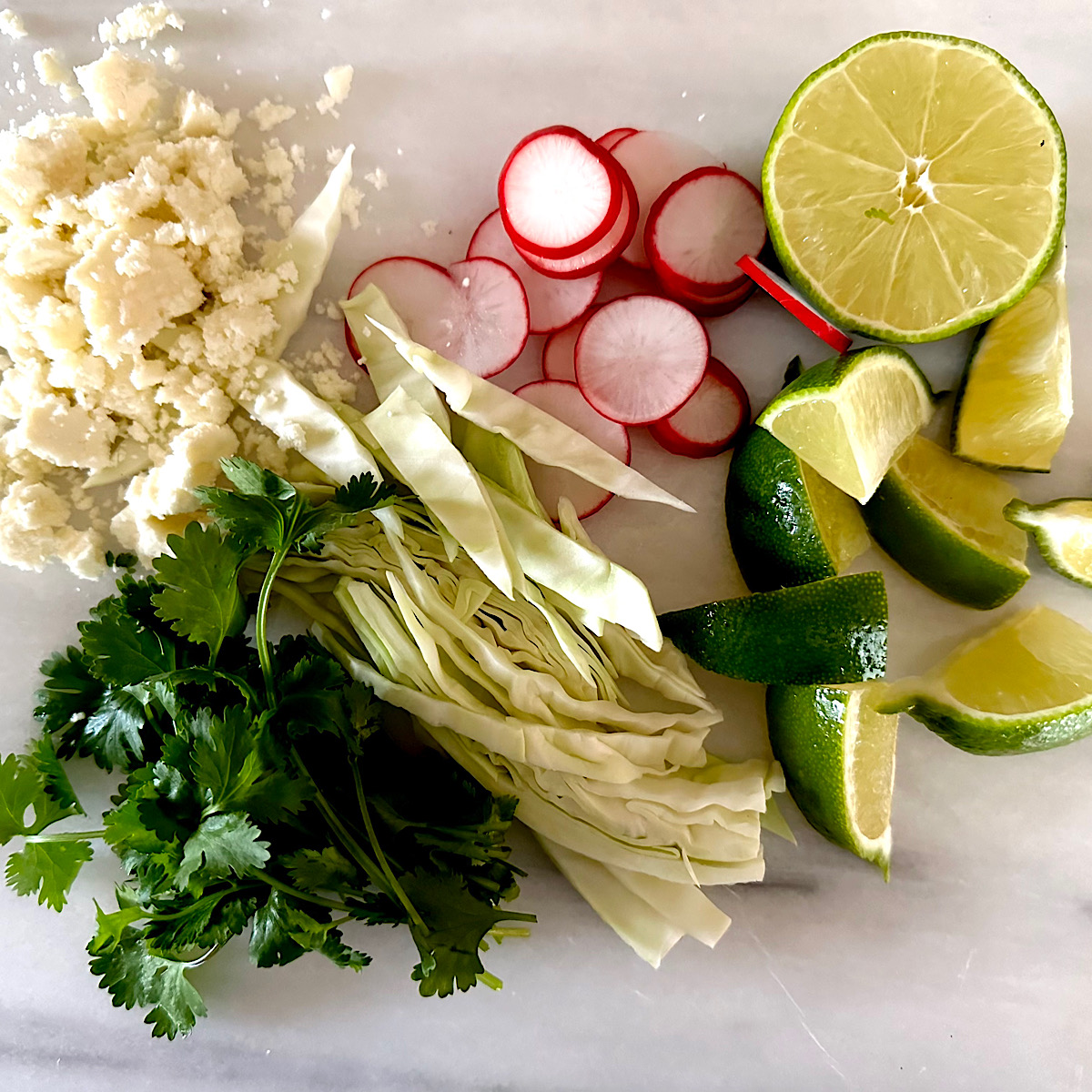
Pozole Rojo vs Pozole Verde vs Pozole Blanco
Red pork and hominy stew (rojo) is the classic pozole, and it is made with a mix of chile peppers. The pepper varieties can vary but it should include smoky anchos or pasillas in the mix.
Pozole verde is usually made with chicken instead of pork and includes poblanos (poblano chile peppers are the fresh peppers that become anchos once they are smoked) and tomatillos.
Pozole blanco does not have red or green chiles to give it the color that the other ones do. It is sometimes considered the most “pure” of the three, with the broth becoming the most important part. It is often served with a spicy salsa on the side for those that want to spice it up a bit.
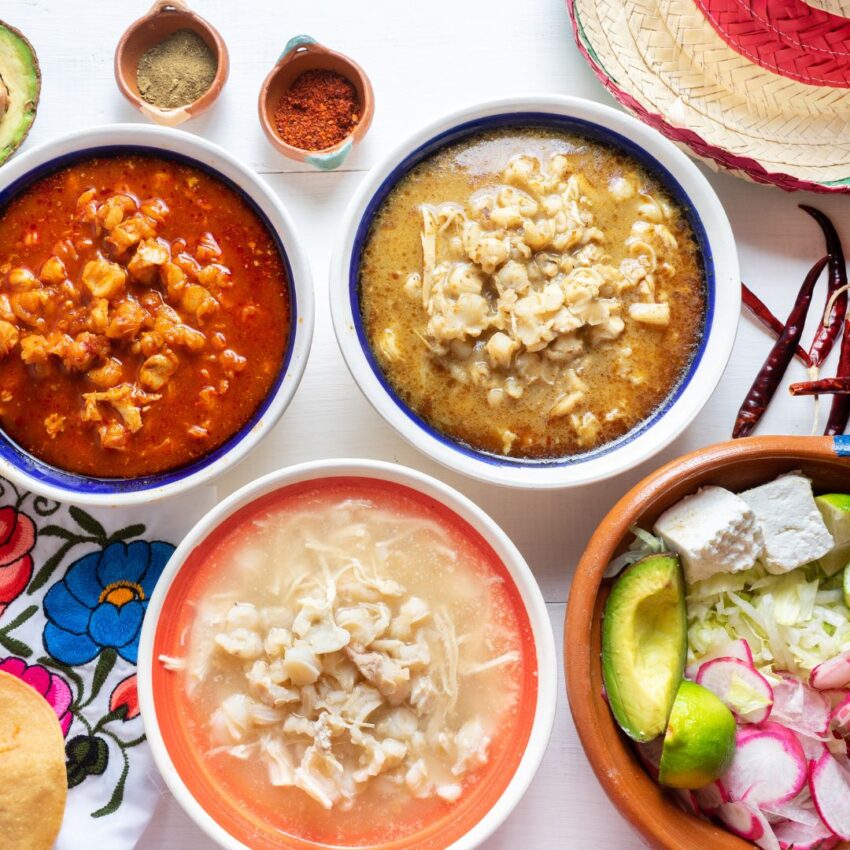
Is Pozole Rojo Spicy?
Most recipes for pozole rojo use the mildly spiced ancho and guajillo peppers. The verde and the blanco is even less spicy, with the verde using mild poblanos and the blanco foregoing the chile peppers all together.
Some cooks will add chile de arbol to the broth, if they want to increase the heat level. Others will just keep it mildly flavored with chiles and provide hot sauces on the table for individual preferences.
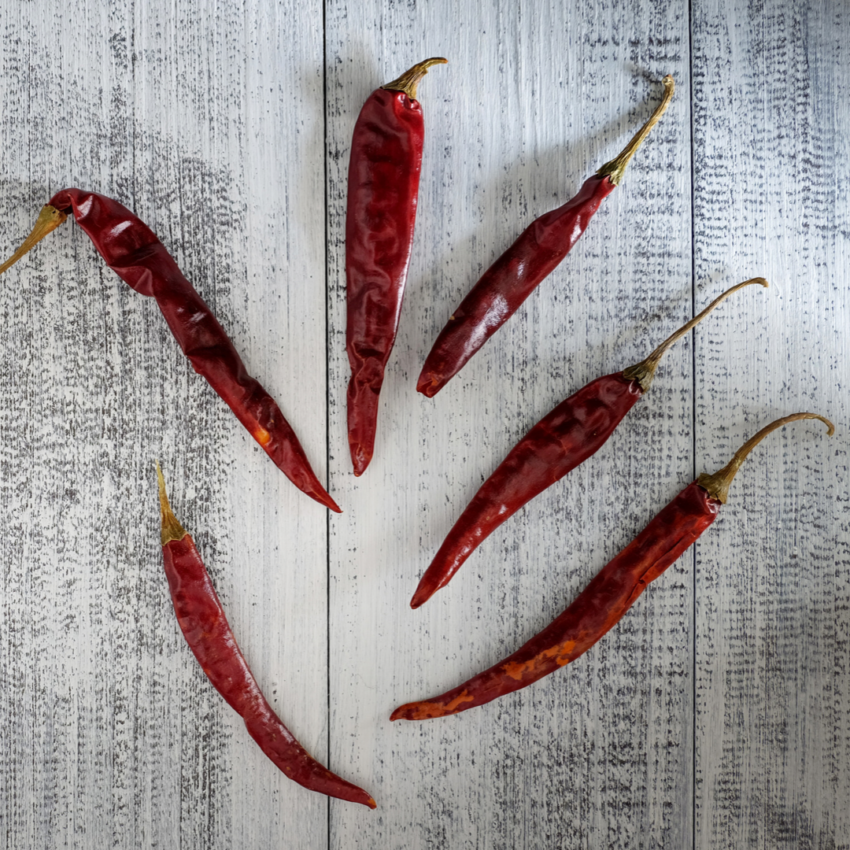
In our recipe we used a mix of anchos, pasillas, and guajillo peppers and then served it with a range of hot sauces on the table. It is also common to include arból chiles instead of hot sauce to increase the heat level.
Frequently Asked Questions:
I have not made it in an instant pot, mostly because the traditional way is to permeate the house with the smells of something special. I don’t see any reason why it couldn’t be made in an instant pot however. Just rehydrate the chiles and make the rojo sauce first and then add that with the rest of the ingredients to the instant pot and set it for “stew”.
It will easily keep in the refrigerator for a week, and in fact gets better with each reheating. Just reheat the whole stew until hot and serve the garnishes fresh.
If you enjoy all types of Mexican food, check out this category of ALL Mexican recipes, where you will find over 40 Mexican recipes, from casual, to low carb, to fancy.
Pork Pozole Rojo: Pork and Hominy Stew
Equipment
- very large pot
- large bowl
Ingredients
- 12 cups canned hominy Drained; We used a 6 lb can from the mercado; you could use 2-3 25 oz cans
- 3-4 pounds mixed pork something with bones if possible (pigs feet, shanks, etc). Use pork shoulder by itself if these are unavailable
- 2 bay leaves
- 2 cloves garlic smashed and peeled
- 2 onions 1 for broth and 1 for rojo sauce
- 12-15 dried chile peppers We used 4 anchos, 5 passilas, and 5 quajillos
- 16 ounces can of diced tomatoes
- 1 bunch cilantro broken up and some saved for garnish
- 1 tablespoon Mexican oregano (dried)
- 1 tablespoon salt
Instructions
- Fill a large pot with water (about 10 cups and add hominy, pork, bay leaves, garlic cloves and one onion (cut in half). Add more water if needed to cover pork.Bring to a boil. Reduce heat and let it simmer while you prepare the rojo sauce.12 cups canned hominy, 2 bay leaves, 2 cloves garlic, 2 onions, 3-4 pounds mixed pork
- While the pork is simmering, make the rojo sauce. First rehydrate chiles in hot water for about 30 minutes or until soft. Do not discard the liquid from the rehydration process as you will need it later.Once the chiles are soft, destem them and add them to a blender, along with the onion (quartered) and a some of the liquid that was used to rehydrate the chiles (I used about 3/4 cup of liquid). Puree until fairly smooth. Add the tomatoes, cilantro, oregano and salt to the chiles in the blender and blend until it is a smooth sauce. You may need to add more of the chile rehydration liquid to get it to a smooth consistency.This is the rojo sauce.16 ounces can of diced tomatoes, 12-15 dried chile peppers, 1 bunch cilantro, 1 tablespoon Mexican oregano (dried), 1 tablespoon salt
- Add the rojo sauce to the pot with the pork and broth and simmer for 2 hours, or until you think all flavors have melded together enough. If the sauce is too thin, simmer it longer uncovered. If it is too thick, add some water or chile rehydration liquid.Taste as you go.
- Serve soup in bowls and have a lot of side garnishes and hot sauces available for people to add to their soup according to their preferences.Garnishes might include radish, lettuce, onions, avocados, limes and a variety of hot sauces (see notes for amounts)
Video
Notes
- ½ head of cabbage shredded
- 1 large white onion diced
- 6 radishes sliced into half moons
- 6 limes quartered
- 1 avocado, sliced
- 6 arból chiles finely chopped (or hot sauces)
- Salt as needed

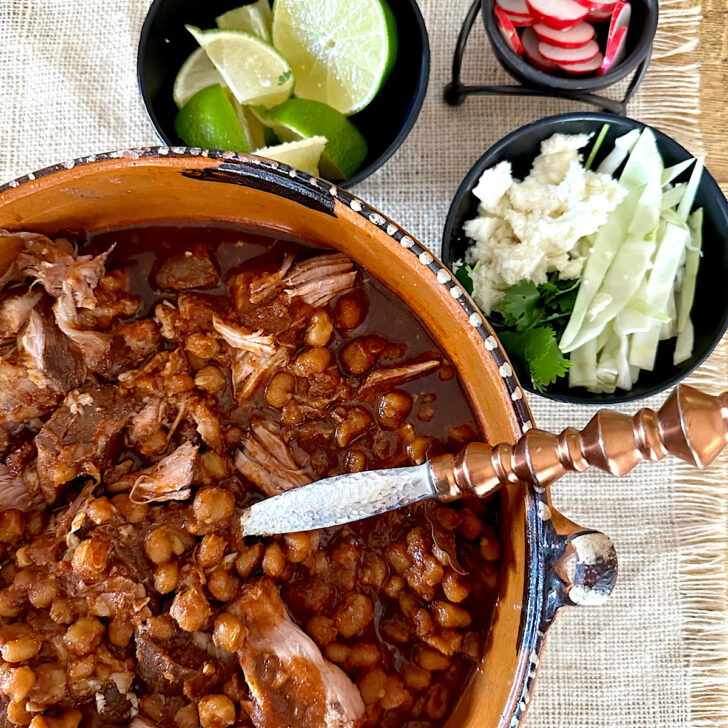

Do we need to seed the peppers before they get blended?
We did not take the seeds out of the dried peppers. A lot of them came out however in the rehydration process and in handling. I think if you have the time I would use your hands to scrape out some of the seeds from the softened rehydrated peppers before blending. It doesn’t hurt to have them in but it will make it more spicy and maybe a little more bitter.